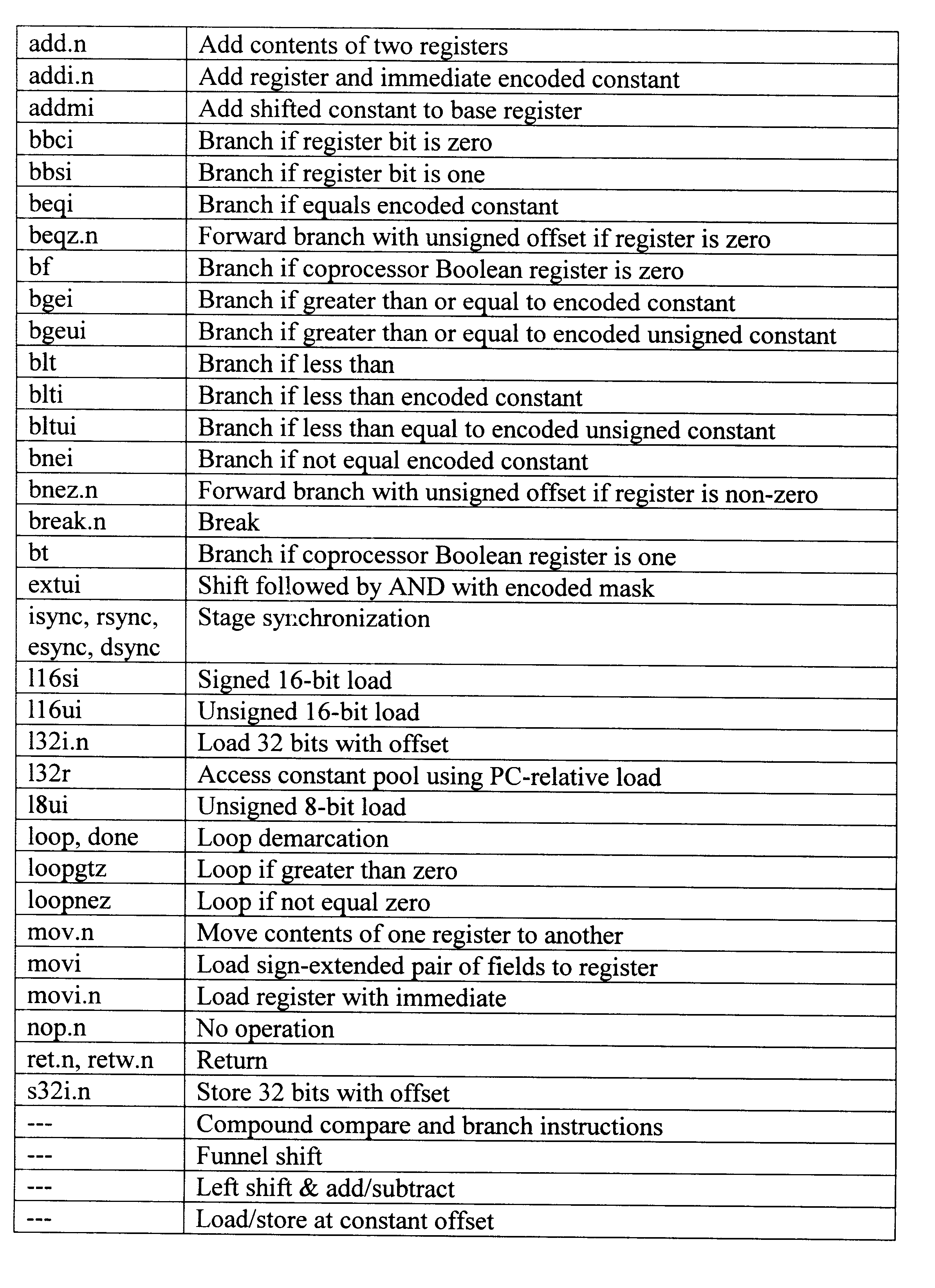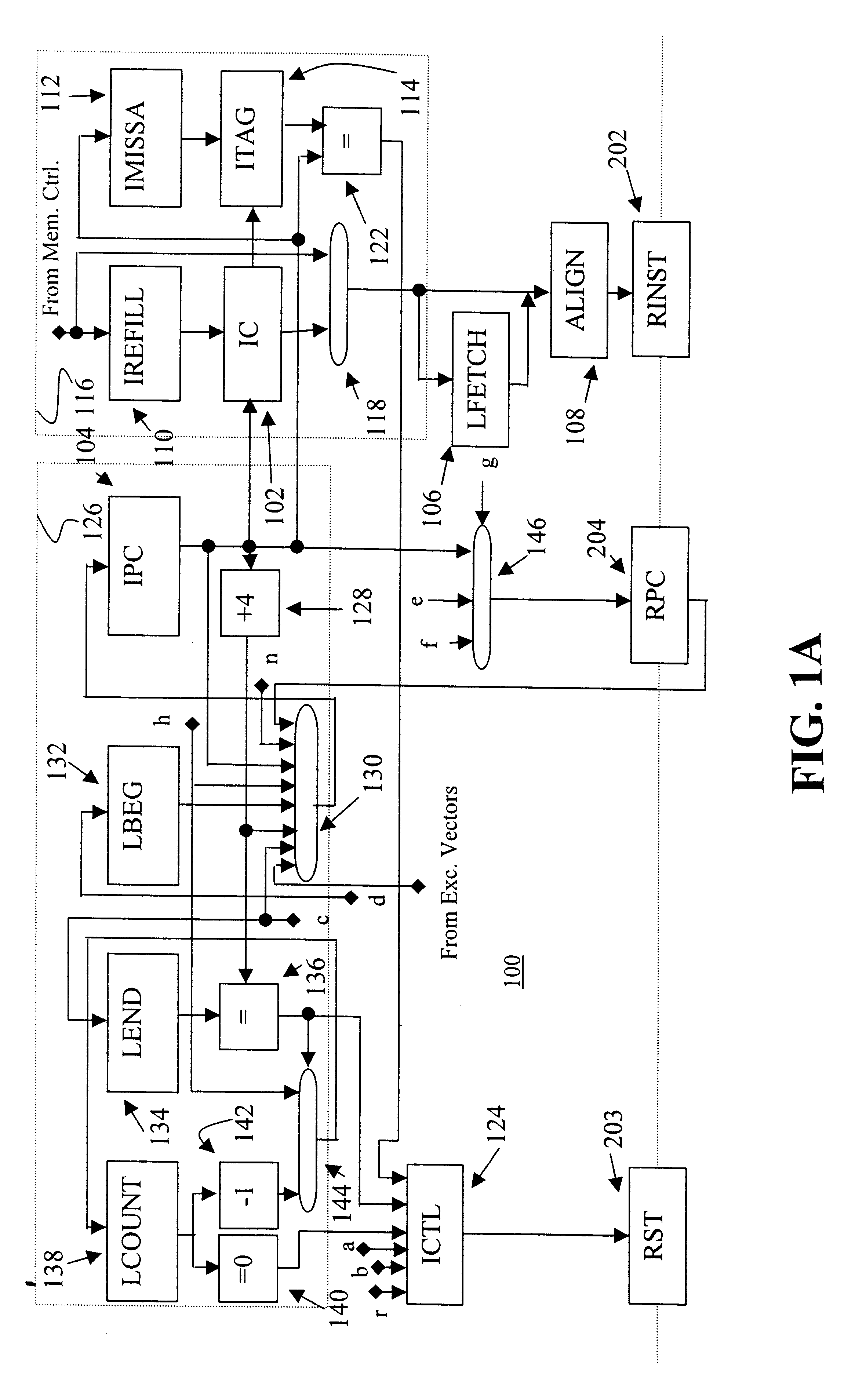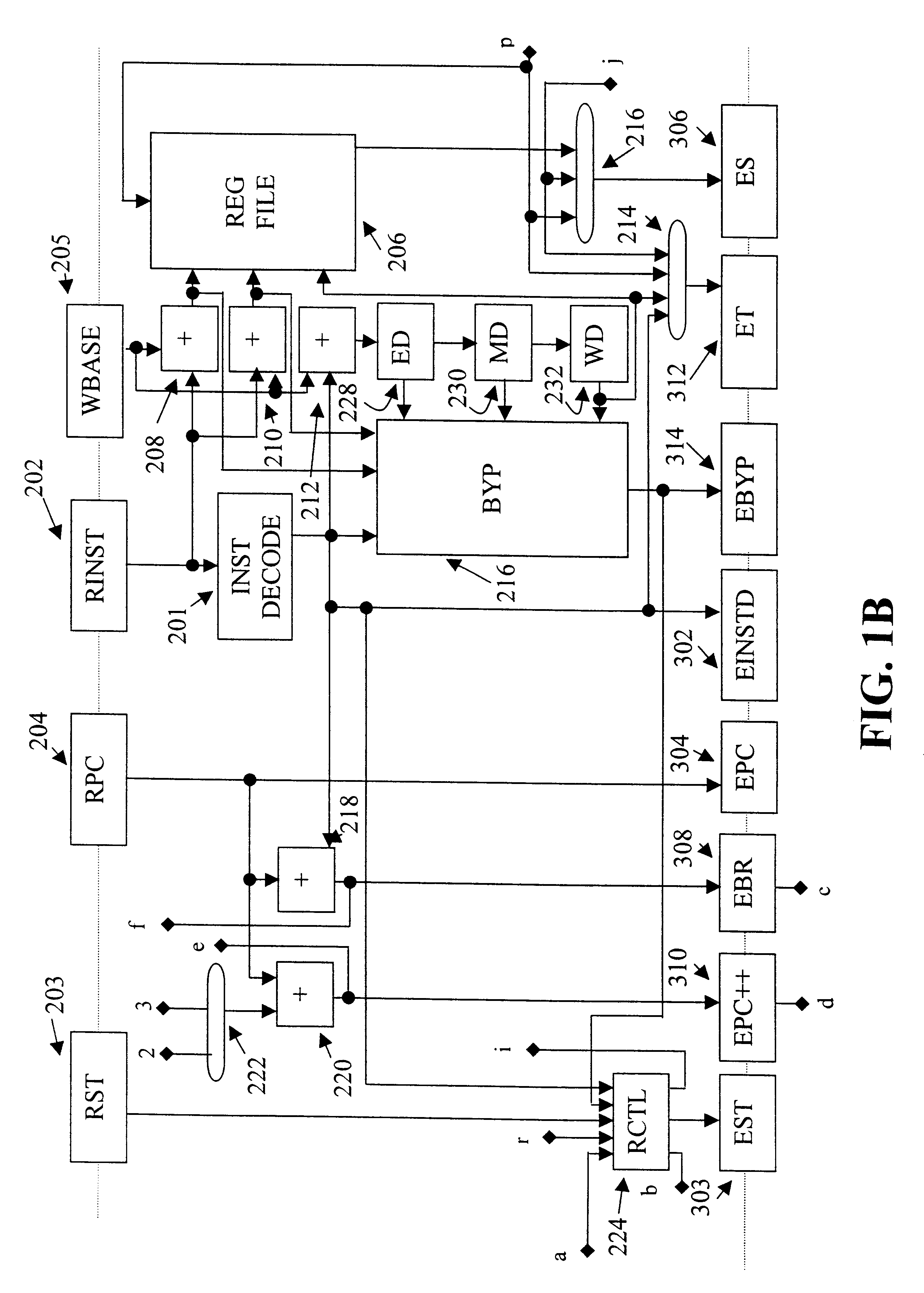High data density RISC processor
a risk processor and high data density technology, applied in the field of microprocessor systems, can solve the problems of low data density, low performance of processors, and low efficiency of early risc instruction sets in producing compact machine cod
- Summary
- Abstract
- Description
- Claims
- Application Information
AI Technical Summary
Benefits of technology
Problems solved by technology
Method used
Image
Examples
Embodiment Construction
A processor suitable for implementing an instruction set according to a preferred embodiment of the invention is shown in FIG. 1. In general, the processor has a 2.sup.32 byte, i.e., 4 GB, virtual memory for instructions and data; a 32 bit program counter IPC; sixteen or more 32 bit general registers; a shift address register SAR; a 32 bit loop begin address register LBEG, a 32 bit loop end address register LEND, and a 32 bit loop count register LCOUNT, all three of which are used by reduced-overhead loop instructions described in greater detail below.
More specifically, the processor pipeline has five basic stages: the instruction fetch, or I stage 100; the instruction decode and register access, or R stage 200; the execution and address calculation, or E stage 300; the memory access, or M stage 400; and the writeback, or W stage 500. In the I stage 100, program memory is accessed to retrieve instructions to be executed. In the R stage 200, the instruction thus fetched is decoded an...
PUM
 Login to View More
Login to View More Abstract
Description
Claims
Application Information
 Login to View More
Login to View More - R&D
- Intellectual Property
- Life Sciences
- Materials
- Tech Scout
- Unparalleled Data Quality
- Higher Quality Content
- 60% Fewer Hallucinations
Browse by: Latest US Patents, China's latest patents, Technical Efficacy Thesaurus, Application Domain, Technology Topic, Popular Technical Reports.
© 2025 PatSnap. All rights reserved.Legal|Privacy policy|Modern Slavery Act Transparency Statement|Sitemap|About US| Contact US: help@patsnap.com



